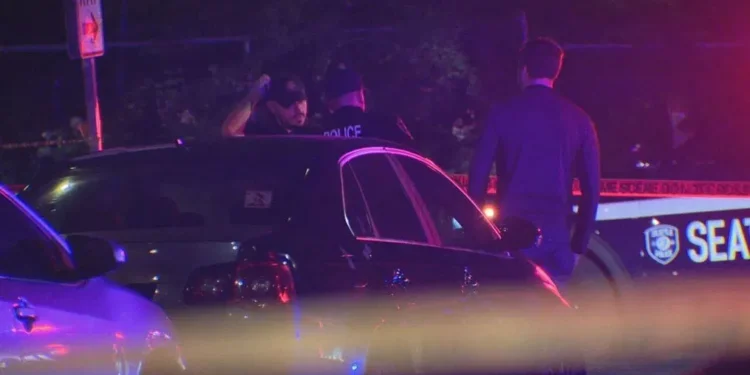Community leaders in Seattle’s Little Saigon neighborhood are calling for enhanced safety measures and multi-jurisdictional support following a fatal shooting Monday night that left one man dead and another hospitalized.
The shooting occurred just after 9:30 p.m. at 12th Avenue South and South Lane Street when two groups confronted each other, resulting in gunfire. Police have made no arrests in the case, which adds to mounting public safety concerns in one of Seattle’s most challenged neighborhoods.
Tanya Woo, a community organizer and former city councilmember, described the persistent violence affecting the area. “Every single week there seems to be a shooting, a stabbing, some sort of incident in this area and it’s just devastating to see it happen over and over again,” Woo said.
The neighborhood faces multiple challenges beyond violent crime, including visible drug dealing, illegal street vending, and individuals with apparent substance abuse issues congregating on prominent streets. Community leaders argue current resources are insufficient to address the scope of problems.
“The crisis overwhelms the resources we have. There are a hundred people here every single day engaged in fentanyl drug use or sales, and we have three safety ambassadors. We have four people from We Deliver Care and maybe two officers,” Woo explained.
Recently installed surveillance cameras helped Seattle Police respond quickly to Monday’s shooting, demonstrating the value of enhanced security infrastructure in the area.
Hours before the gunfire, Woo toured the neighborhood with Seattle Police Chief Shon Barnes to discuss ongoing needs and potential solutions. “The police chief talked about putting together a plan to help alleviate a lot of these issues that we’re seeing here in the Little Saigon,” Woo said. “We asked him for a timeline.”
Community members are requesting not only increased regular police patrols but also a dedicated facility where officers and outreach workers can establish consistent presence in the area rather than periodic responses to incidents.
Woo emphasized the need for coordinated efforts beyond city resources, calling for county and state involvement to address underlying issues contributing to neighborhood problems.
“We’re trying to get the county to step up as well as the state because the county is in charge of homelessness and mental health which is a huge need when it comes to addiction here on these streets,” Woo said.
State funding is also being sought to address The Jungle homeless encampment and related issues affecting the neighborhood’s stability and safety.
While acknowledging the mayor’s office as “a strong partner,” community leaders stress that comprehensive solutions require multi-level government coordination to address complex interconnected challenges of homelessness, mental health services, addiction treatment, and public safety.
The fatal shooting underscores the urgent nature of community concerns and the need for sustained, comprehensive intervention rather than reactive responses to individual incidents.







